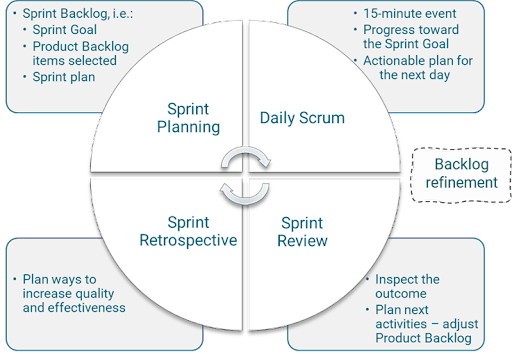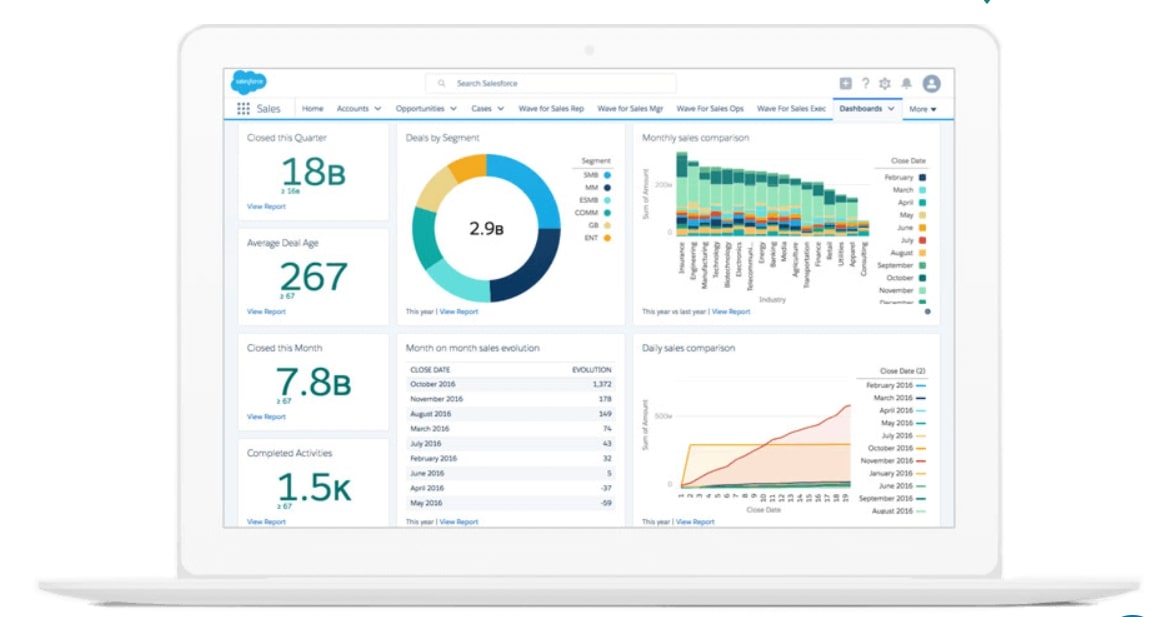Agile methodologies have revolutionized the way software development teams work. Two of the most popular agile methodologies are Kanban and Scrum. Both methodologies are used to manage and complete projects in an efficient and effective manner.
In this article, we will explore the differences between Kanban and Scrum and help you decide which methodology is best for your team.
Kanban vs Scrum: At a Glance
| Comparison | Kanban | Scrum |
|---|---|---|
| Project Management | Best suited for projects that have a continuous flow of work, such as maintenance and support projects. | Best suited for projects that have a defined scope and deadline, such as product development projects. |
| Roles and Responsibilities | Does not have predefined roles, which can make it difficult to define responsibilities and accountability within the team. Encourages team members to collaborate and share responsibilities. | Has defined roles, including the product owner, Scrum master, and development team. Provides clarity of roles to improve accountability. |
| Planning and Preparation | Does not require a significant amount of planning and preparation, as the process is constantly evolving. | Requires a significant amount of planning and preparation, as each sprint has a set deadline. |
| Flexibility | More flexible than Scrum, as it allows teams to make changes quickly and easily. | Less flexible than Kanban, as it is difficult to make changes once a sprint has started. |
| Work in Progress (WIP) Limits | Emphasizes limiting WIP to reduce waste and improve flow. | Does not have a specific WIP limit, but emphasizes completing tasks within the sprint timeframe. |
What is Kanban?
Kanban is a visual management tool that helps teams visualize their work and streamline their processes. The Kanban process involves creating a board with columns that represent the stages of the project. Each task is represented by a card that moves from column to column as it progresses through the project stages. Kanban also emphasizes limiting work in progress (WIP) to reduce waste and improve flow.

👉 Want to take a deeper look at what is a Kanban Board? Read our guide to Kanban Board here.
Advantages of Kanban
One of the main advantages of Kanban is its flexibility. Kanban allows teams to make changes quickly and easily, as the process is constantly evolving. This flexibility makes it easier for teams to adapt to changing requirements or priorities.
Kanban also emphasizes continuous improvement, which means that teams are encouraged to identify and resolve bottlenecks in the process. This focus on continuous improvement can help teams to continually enhance their processes and deliver better results.
Disadvantages of Kanban
One of the disadvantages of Kanban is that it does not have predefined roles like Scrum. This can make it difficult to define responsibilities and accountability within the team. Kanban also does not have set timeframes like Scrum, which can make it difficult to predict when a project will be completed. This lack of predefined roles and timeframes can lead to confusion and disorganization if the team is not well-aligned.
What is Scrum?
Scrum is an agile methodology that uses sprints to manage and complete projects. A sprint is a set period of time (usually 2-4 weeks) during which the team works to complete a set of tasks. Scrum also has predefined roles, including the product owner, Scrum master, and development team.

Advantages of Scrum
One of the main advantages of Scrum is its predictability. Scrum provides a clear timeframe for completing a project, as each sprint has a set deadline. This predictability makes it easier for stakeholders to plan and allocate resources.
Scrum also provides defined roles, which helps to ensure that everyone on the team knows their responsibilities. This clarity of roles can help to avoid misunderstandings and improve accountability.
Disadvantages of Scrum
One of the disadvantages of Scrum is that it can be rigid. Once a sprint has started, it is difficult to make changes to the process. This rigidity can make it harder for teams to adapt to changing priorities or requirements.
Scrum also requires a significant amount of planning and preparation, which can be time-consuming. This planning can sometimes lead to delays and can make it harder for teams to be as responsive as they need to be.
Kanban vs Scrum
Project Management
Kanban is best suited for projects that have a continuous flow of work, such as maintenance and support projects. Because it is based on a visual management tool, it is easy to see what is happening at any given time, and to make changes to the process in response to changing conditions. Kanban is also well-suited for projects that require a high degree of flexibility, as it does not have set timeframes or predefined roles.
Scrum is best suited for projects that have a defined scope and deadline, such as product development projects. Because each sprint has a set deadline, it is easier to plan and allocate resources for the project. Scrum is also well-suited for projects that require a high degree of predictability, as each sprint has a clear goal and timeframe for completion.
KPIs
Kanban and Scrum use different KPIs to measure project success. Some of the key KPIs for Kanban include:
- Lead Time: The time it takes to complete a task from start to finish.
- Cycle Time: The time it takes to complete a task from the moment it starts to the moment it is delivered.
- Throughput: The amount of work that can be completed within a certain period of time.
Some of the key KPIs for Scrum include:
- Velocity: The amount of work that can be completed by the team within a sprint.
- Sprint Burndown: A visual representation of the amount of work remaining in a sprint.
- Product Backlog Burndown: A visual representation of the amount of work remaining in the product backlog.
Kanban’s KPIs are focused on improving flow and reducing waste, while Scrum’s KPIs are focused on completing work within the sprint timeframe. Both methodologies use KPIs to monitor progress and identify areas for improvement.
Roles and Responsibilities
Kanban does not have predefined roles like Scrum. This can make it difficult to define responsibilities and accountability within the team.
However, this lack of predefined roles can also make it easier for team members to collaborate and share responsibilities. In a Kanban environment, team members are encouraged to take ownership of the process and to collaborate with each other to get things done.
Scrum is a framework that defines specific roles to ensure clarity of responsibilities and improve accountability. The three key roles in Scrum are the product owner, Scrum master, and development team:
- Product Owner: The product owner is responsible for representing the interests of the stakeholders and ensuring that the product backlog is prioritized and up-to-date. The product owner is also responsible for defining the product vision and ensuring that the team has a clear understanding of the project goals.
- Scrum Master: The Scrum master is responsible for ensuring that the Scrum process is followed and that the team is adhering to the Scrum principles. The Scrum master is also responsible for facilitating the Scrum events and removing any obstacles that may be preventing the team from making progress.
- Dev Team: The development team is responsible for delivering a potentially releasable product increment at the end of each sprint. The development team is self-organizing and cross-functional, meaning that it has all the skills necessary to complete the work required for the sprint. The development team is also responsible for estimating the effort required for each item in the product backlog and for determining how much work can be completed in each sprint.
The defined roles in Scrum can help to avoid misunderstandings and improve accountability. However, the predefined roles can also lead to a more rigid environment where team members are less likely to collaborate and share responsibilities. It is important for team members to communicate effectively and work together to ensure that the project goals are met.
Planning and Preparation
Kanban does not require a significant amount of planning and preparation, as the process is constantly evolving. This makes it easier for teams to adapt to changing conditions and requirements. However, this lack of planning can also make it harder to manage the project, as there is no clear roadmap for completion.
Scrum requires a significant amount of planning and preparation, as each sprint has a set deadline. This planning helps to ensure that the project is completed on time and within budget. However, this planning can sometimes lead to delays and can make it harder for teams to be as responsive as they need to be.
Flexibility
Kanban is more flexible than Scrum, as it allows teams to make changes quickly and easily. This flexibility makes it easier for teams to adapt to changing requirements or priorities. Kanban also emphasizes continuous improvement, which means that teams are encouraged to identify and resolve bottlenecks in the process. This focus on continuous improvement can help teams to continually enhance their processes and deliver better results.
Scrum is less flexible than Kanban, as it is difficult to make changes once a sprint has started. This rigidity can make it harder for teams to adapt to changing priorities or requirements. However, the predictability of Scrum can make it easier for stakeholders to plan and allocate resources.
Work in Progress (WIP) Limits
Kanban emphasizes limiting work in progress (WIP) to reduce waste and improve flow. By limiting WIP, teams can focus on completing tasks and delivering value to stakeholders. However, setting WIP limits can also lead to delays if teams are not able to complete tasks in a timely manner.
Scrum does not have a specific WIP limit, but it does emphasize completing tasks within the sprint timeframe. By focusing on completing tasks within the sprint timeframe, teams can ensure that they are making steady progress towards the project goal. However, this emphasis on completing tasks within the sprint timeframe can sometimes lead to rushed work and lower quality output.
Which Methodology Should You Choose?
Choosing the right methodology depends on the project requirements and the team’s preferences. If the project has a continuous flow of work and requires flexibility, Kanban is the better choice. If the project has a defined scope and deadline and requires predictability, Scrum is the better choice.
Ultimately, both methodologies have their advantages and disadvantages. The key is to choose the methodology that best fits your team’s needs and the project requirements.
👉 You can use Project Management Software to implement Kanban and Scrum. See our list of the best project management software to do so.






